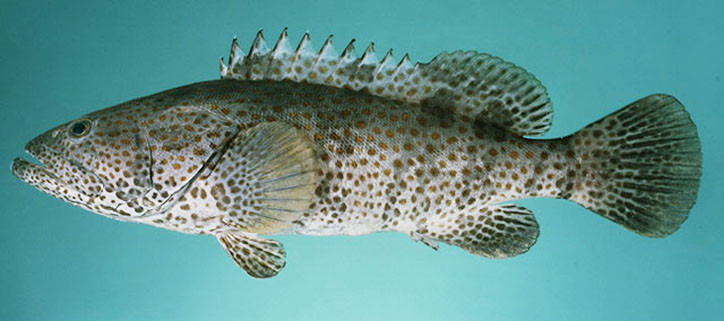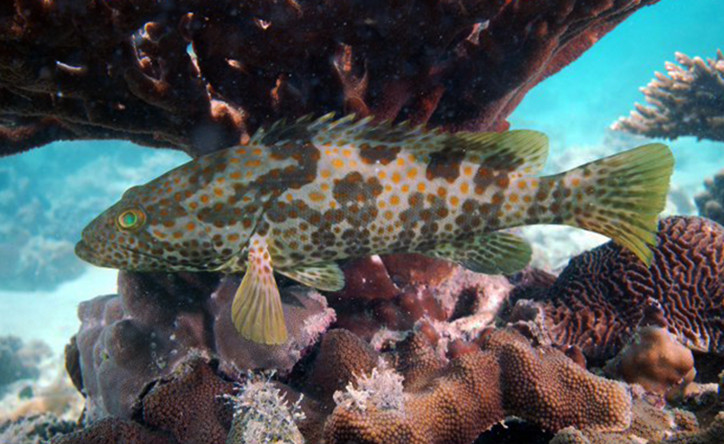Fish of the Epinephelus genus of the Epinephelinae (groupers) subfamily of the Serranidae family of the superfamily Percoidea of the Percoidei suborder of the Perciformes order of the Acanthopterygii superorder.

(Orange-spotted grouper. Photo by © John E. Randall. fishbase.org)
Orange–spotted grouper (Epinephelus coioides) was first described in 1822 by the Scottish geographer, zoologist and botanist Francis Buchanan-Hamilton (1762-1829).
It inhabits the depth of 1-100 meters. It prefers to swim close to a muddy bottom near the rocks. It is a solitary predator. Juveniles enter estuaries and bays. The maximum recorded length is 120 cm. The maximum weight is 15 kilograms. It feeds on medium-sized fish, shrimps and crabs.

(Orange-spotted grouper. Photo by © John Burt. fishbase.org)
It is a very rare inhabitant of the Adriatic. Most likely, it penetrated into the Mediterranean Sea through the Suez Canal. The fish was found in the northern part of the sea in the Trieste region, Italy, several times.
Names of orange–spotted grouper (Epinephelus coioides) in other languages as follows:
Mero de pintas naranjas (Spanish), Cernia arancio-pezzata (Italian), Orangeflecken-Zackenbarsch (German), Оранжевопятнистый групер (Oranzhevopjatnjistyj gruper) (Russian), Narandzhasto pjegasta kernja, Narančasto pjegasta kirnja (Serbian, Croatian), Mérou taches oranges (French).